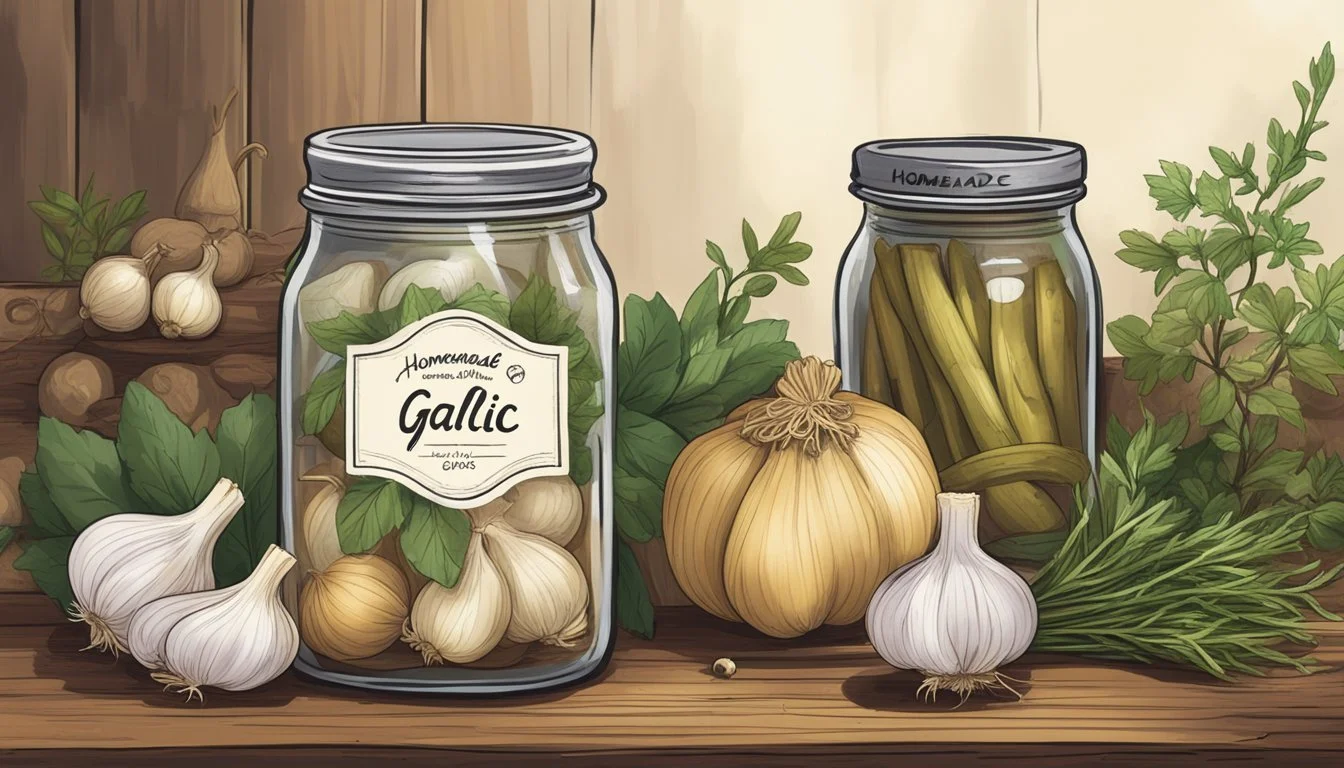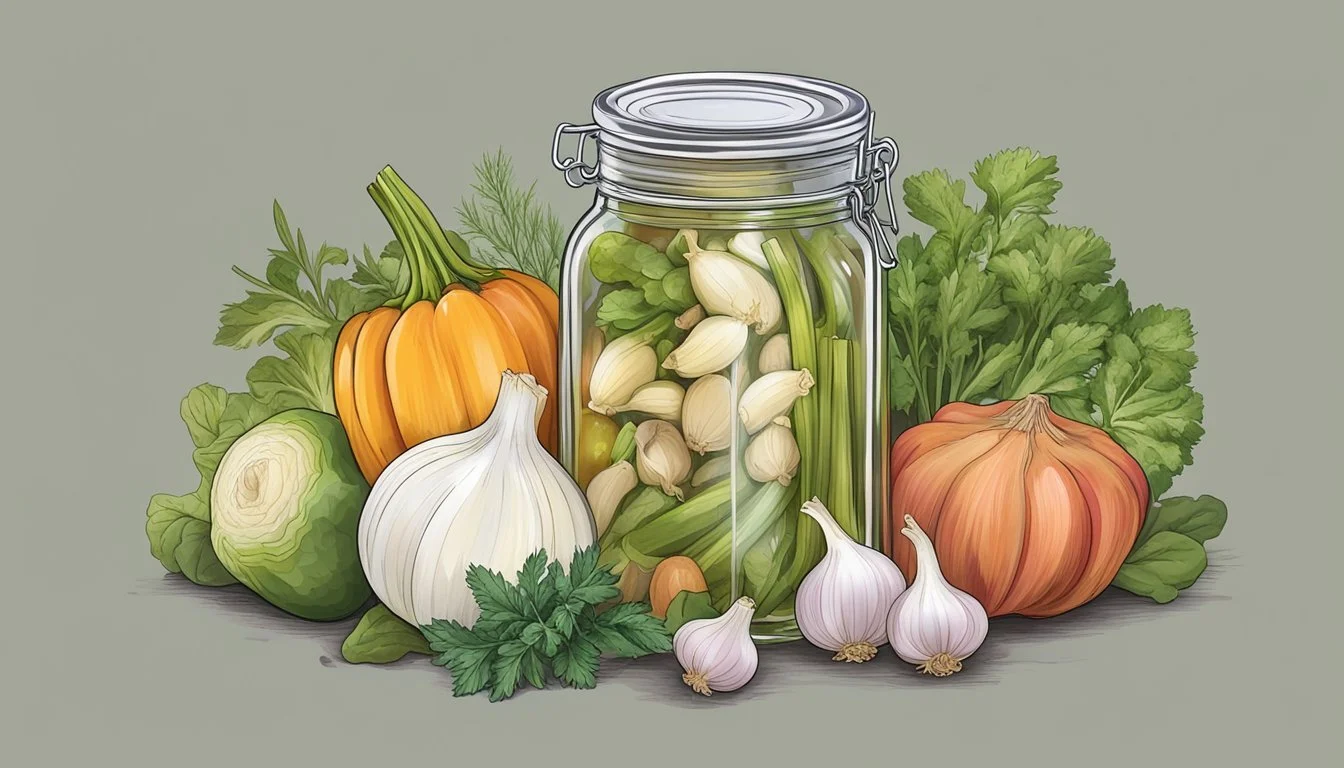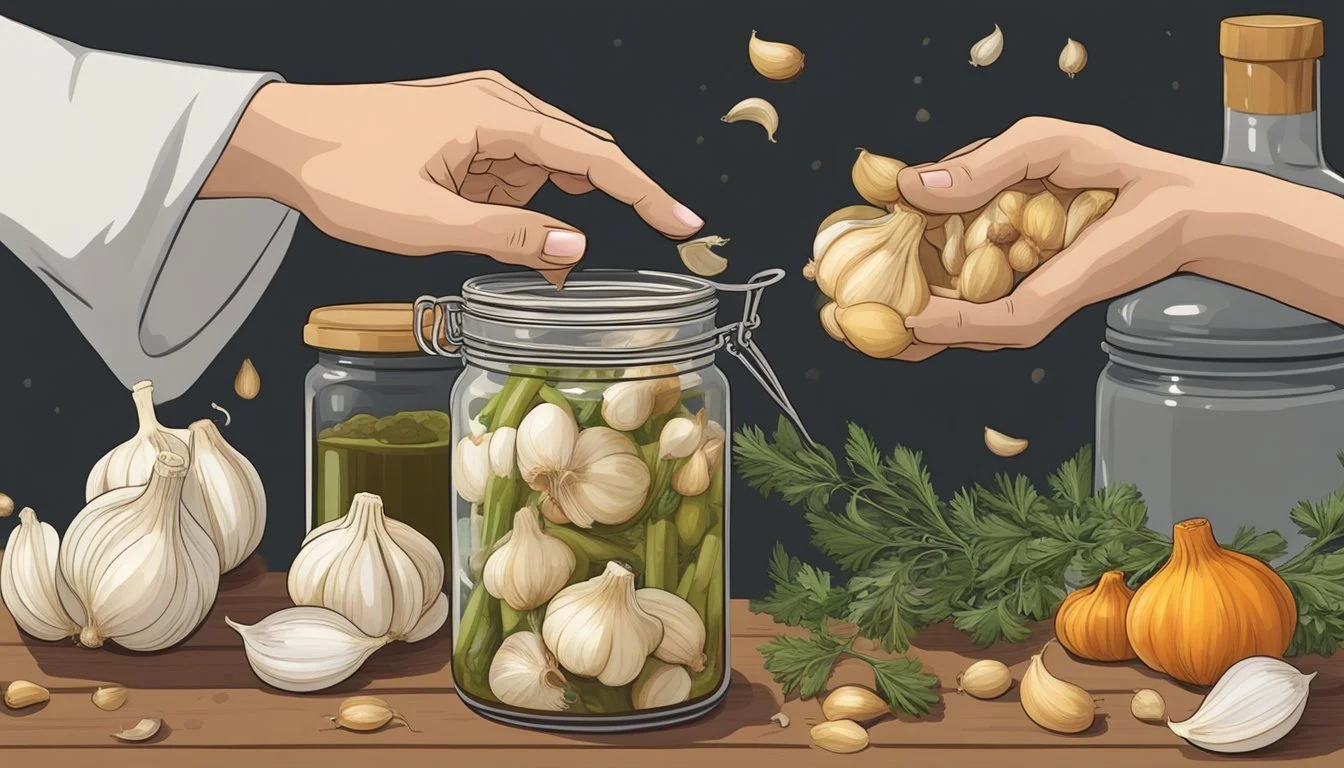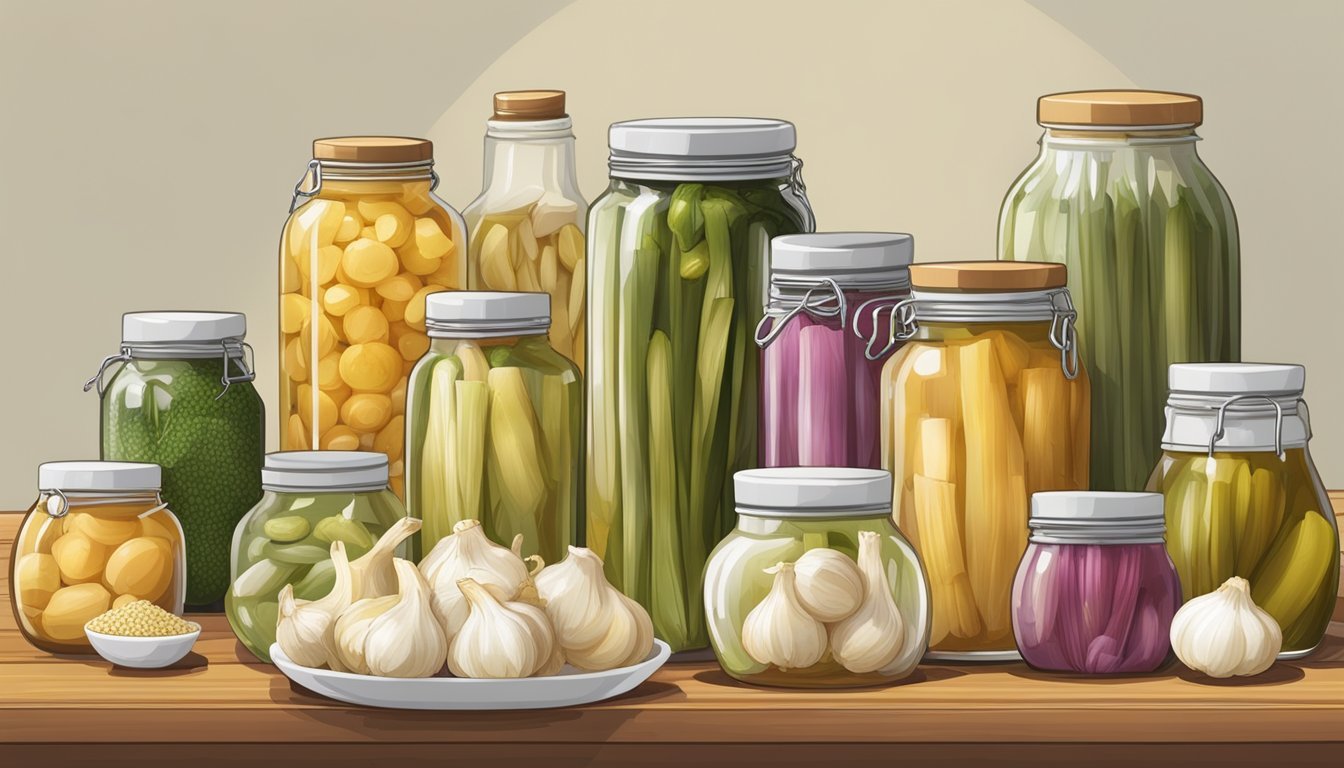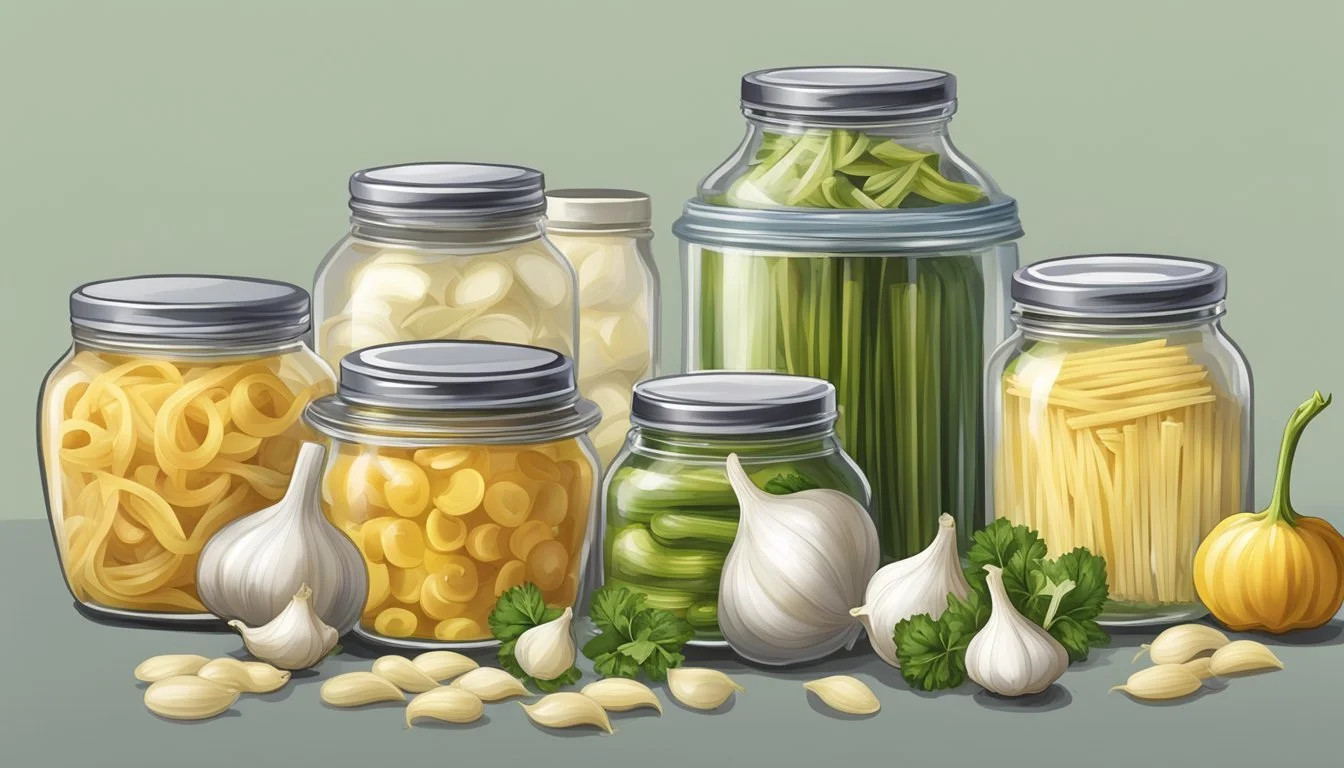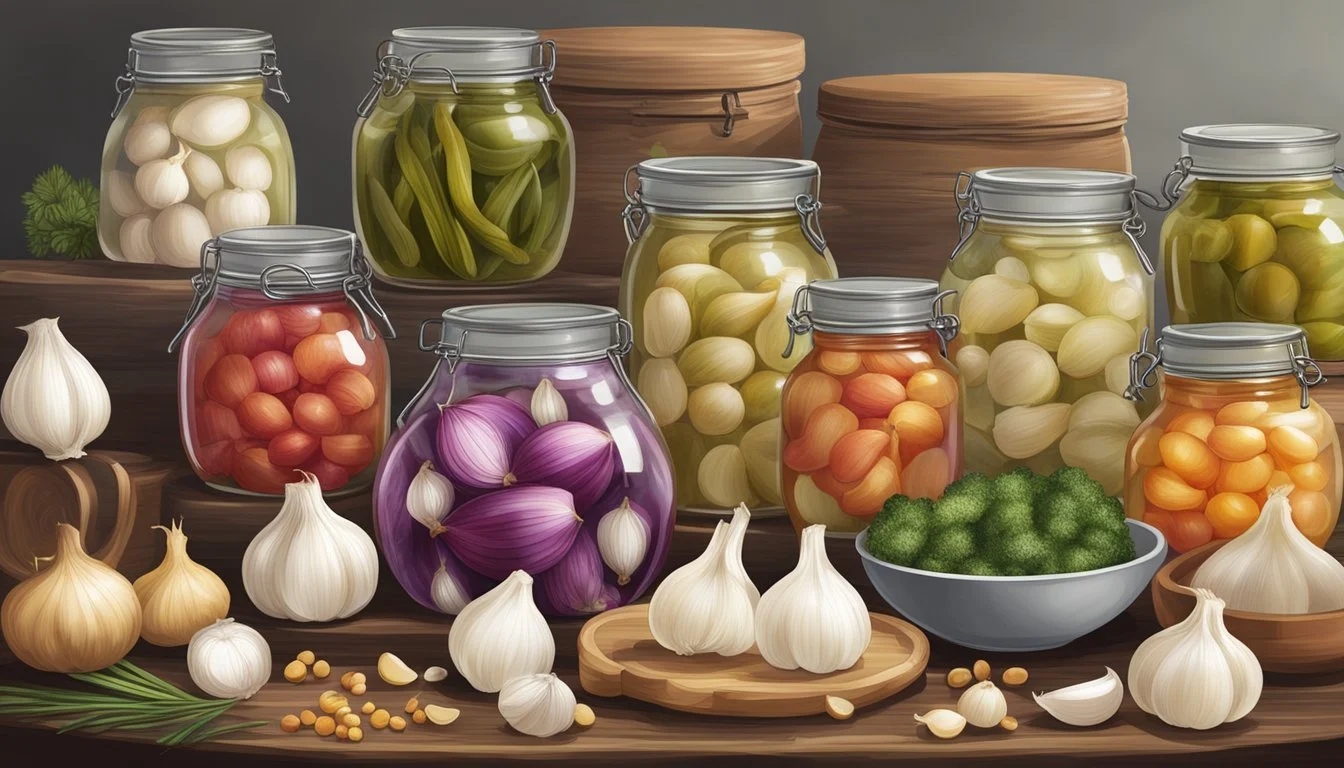Pickled Garlic Substitutes
Best Alternatives for Flavorful Dishes
When it comes to finding substitutes for pickled garlic in recipes, there are several flavorful alternatives that can seamlessly take its place. Using frozen garlic or garlic powder can be effective substitutes for pickled garlic. Frozen garlic retains much of the fresh garlic's robust flavor and can be conveniently added to your dishes without any prior preparation. Garlic powder, made from dehydrated garlic, introduces a similar garlic essence, although in a more concentrated form; a small amount can go a long way in flavoring your dish.
For those seeking a less processed option, garlic paste is another viable substitute. A teaspoon of garlic paste can provide the same depth of flavor as a fresh clove, and it dissolves easily, making it suitable for soups, marinades, and dressings. Alternatively, minced fresh garlic can replicate the pungency and aroma of pickled garlic when incorporated into recipes, offering a fresher, sharper taste.
Each substitute has its own distinct characteristics, allowing you to tailor the flavor profile of your dish to suit your preferences. Whether you opt for frozen garlic, garlic powder, garlic paste, or minced fresh garlic, these alternatives ensure that your recipes won't lack the rich garlic flavor you desire.
The Essentials of Pickled Garlic
Pickled garlic offers a unique flavor profile and can be a versatile addition to various dishes. This section will explore what makes pickled garlic special and break down its core components.
Understanding Pickled Garlic
Pickled garlic is made by preserving garlic cloves in a mixture of vinegar, salt, water, and sometimes sugar. This pickling process not only enhances the garlic’s shelf life but also adds a tangy, slightly sweet flavor. The preserved garlic can be used in salads, stir-fries, charcuterie boards, and dips.
The key allure of pickled garlic is its milder taste compared to raw garlic. It retains its aromatic essence while losing some of its bite due to the pickling process. This milder, tangy flavor makes it preferable for people who find raw garlic too pungent.
Key Ingredients and Flavor Profile
The primary ingredients needed to make pickled garlic include garlic cloves, vinegar, salt, sugar, and water.
Garlic Cloves: Fresh, peeled cloves are essential. They should be firm and free of blemishes.
Vinegar: White vinegar is commonly used, but apple cider or wine vinegar can add different flavors.
Salt: A non-iodized salt, like pickling or kosher salt, works best.
Sugar: Optional, but it helps balance the acidity with a touch of sweetness.
Water: Often combined with vinegar to create the brine.
The flavor profile of pickled garlic is a delicate balance of pungent and sweet. The vinegar imparts a tangy zest, while the sugar (if added) provides a slight sweetness that mellows the garlic's natural sharpness. This unique combination makes pickled garlic a delightful addition to various culinary applications.
Health Benefits of Pickled Garlic
Pickled garlic is not only a flavorful addition to many dishes but also provides several health benefits. It retains important nutritional properties, including antioxidants and essential vitamins, making it a valuable food to include in your diet.
Nutritional Value
Pickled garlic preserves many of the beneficial compounds found in raw garlic. It contains antioxidants such as allicin, which can have positive effects on heart health by reducing blood pressure and cholesterol levels. These antioxidants also help with cellular protection against oxidative stress.
The fermentation process used in pickling can introduce probiotics, beneficial bacteria that support gut health. These probiotics aid digestion and bolster the immune system.
Vitamin C and Iron Content
Pickled garlic is a notable source of Vitamin C, which supports the immune system and helps with the absorption of iron. Vitamin C also plays a role in collagen production, which is crucial for skin health and wound healing.
Iron is another key nutrient found in pickled garlic. Iron is essential for the production of hemoglobin, which carries oxygen in the blood. A diet with sufficient iron can help prevent anemia and support overall energy levels.
Including pickled garlic in your diet offers a convenient way to boost your intake of these vital nutrients.
Substituting Pickled Garlic in Recipes
When cooking without pickled garlic, various alternatives can be just as effective. Each substitute offers distinct flavors and textures, suitable for specific dishes and preferences.
When to Substitute
Substituting pickled garlic becomes necessary when it is unavailable or when a different flavor profile is desired. Some recipes call for the tangy, fermented quality of pickled garlic, which can be hard to replicate. Depending on the recipe's requirements—be they for marinades, dressings, or cooked dishes—choosing the right substitute is crucial.
Best Substitutes for Pickled Garlic
Several options can replace pickled garlic:
Garlic Powder: Use 1/8 teaspoon for each clove of fresh garlic. It offers convenience and a concentrated flavor.
Minced Garlic: Ideal for a more robust, fresh garlic flavor. Use a small amount, as raw minced garlic can be potent.
Garlic Salt: Adds both garlic flavor and saltiness. Adjust the salt content in the recipe to prevent over-seasoning.
Dried Garlic: Flakes or granules provide a milder taste. Rehydrate them in a bit of water before use.
Garlic Paste: Smooth and easy to mix but less crunchy. Use sparingly as it is quite concentrated.
Hing (Asafoetida): A unique spice that mimics garlic's pungency. A pinch can substitute in certain recipes, especially Indian cuisine.
How Substitutes Affect Taste and Texture
Each substitute brings unique changes to a dish's flavor and texture:
Garlic Powder and Salt: Impart a steady garlic flavor but lack the crunchy texture of pickled garlic.
Minced Garlic: Provides a sharp flavor and a bit of bite, making it suitable for raw applications like dressings.
Dried Garlic: When rehydrated, gives a subtler garlic essence without the tanginess of pickled garlic.
Garlic Paste: Blends smoothly into sauces and marinades, offering a strong garlic kick without texture.
Hing: Adds a distinctly sharp and spicy note but should be used cautiously to avoid overpowering the dish.
In sum, the choice of substitute impacts the overall flavor profile and texture of the recipe. Adjustments may be needed to balance these changes effectively.
Creating Your Own Substitutes
Making pickled garlic substitutes at home offers the flexibility to alter flavor profiles and ensures you always have a supply. The following sections provide guidance on how to create your own pickled garlic at home, along with various flavoring options to customize the taste.
Homemade Pickled Garlic Recipe
To start, gather the following ingredients: fresh garlic bulbs, vinegar, water, salt, and any desired herbs or spices. Begin by peeling the garlic cloves. Place them in a clean jar, leaving sufficient headspace.
Ingredients:
1 cup garlic cloves, peeled
1 cup vinegar
1 cup water
1 tablespoon salt
Optional: 1 teaspoon oregano, 1 teaspoon cumin
Instructions:
Combine vinegar, water, and salt in a pot and bring to a boil.
Pour the hot mixture over the garlic cloves in the jar.
Wipe the rim and seal the jar with a lid.
Process in a water bath for 10 minutes to ensure safety and longevity.
Alternative Flavoring Options
To experiment with flavors, consider incorporating a variety of herbs and spices. Oregano and cumin can add unique tastes to your pickled garlic.
Flavor Variations:
Oregano: Adds a Mediterranean twist.
Cumin: Provides an earthy, warm flavor.
Steps:
Add your chosen herbs or spices directly to the jar before pouring in the hot vinegar mixture.
Follow the same processing steps to ensure flavors meld properly.
Creating pickled garlic substitutes at home is straightforward and allows for personalization of flavors, ensuring a versatile addition to any kitchen.
Complementary Foods and Dishes
Pickled garlic can be an excellent addition to various dishes, adding a tangy and savory element. From enhancing the depth of condiment and marinade flavors to elevating soups and appetizers, and even serving as the perfect garnish for garlic bread, its versatility is impressive.
Pairing with Condiments and Marinades
Pickled garlic infuses a unique tang into condiments and marinades. When whisked into dressings, it enhances the taste with its slight acidity. Hummus benefits from a pop of pickled garlic, making the flavor more robust and dynamic.
For marinades, chopped or minced pickled garlic can replace fresh cloves. Its acidic nature helps tenderize meats, and it blends well with other marinade ingredients like soy sauce, olive oil, and citrus juice.
Enhancing Soups and Appetizers
In soups, pickled garlic can be a game-changer. It adds depth to broth-based soups and can be used as a finishing touch to creamy soups. Its unique flavor pairs exceptionally well with vegetable or chicken soups.
For appetizers, pickled garlic pieces can elevate bruschetta or crostini, offering a complex and enticing flavor. It's also a great addition to charcuterie boards, complementing meats and cheeses with its tangy zest.
Crafting the Perfect Garlic Bread Garnish
Transforming garlic bread with pickled garlic is simple and delicious. Mixing minced pickled garlic into the butter spread adds a bright, tangy dimension. Spread this mixture over toasted bread for an elevated garlic bread experience.
For an extra touch, sprinkle diced pickled garlic on top after baking. This ensures that each bite has a perfect balance of savory butter and tangy garlic. The result is a more vibrant and flavorful garlic bread that stands out.
Storage and Preservation
Proper storage and preservation of pickled garlic substitutes ensure their quality and safety. Adhering to correct techniques can significantly extend the shelf life of your homemade substitutes.
Proper Canning Techniques
Canning is an essential method for preserving pickled garlic substitutes. Begin by sterilizing canning jars to eliminate any potential contaminants. Using a slotted spoon, place the prepared garlic into the hot jars while maintaining a 1/2-inch headspace.
Pour boiling brine over the garlic, again ensuring the 1/2-inch headspace. Remove air bubbles using a bubble popper tool. Wipe the jar rims with a damp paper towel to ensure a secure seal. Apply the lids and process the jars in a boiling water bath as recommended by the Oregon State Extension Service. Allow the jars to cool undisturbed to form a reliable vacuum seal.
Extending Shelf Life for Homemade Substitutes
To extend the shelf life for homemade garlic substitutes, store them in a cool, dark pantry. A properly canned substitute can be shelf-stable for up to a year. For refrigerator pickles, use them within a couple of weeks to maintain freshness.
When making jarred minced garlic or pickled garlic, adding a small amount of citric acid can enhance preservation by creating an acidic environment that inhibits bacterial growth. Always use clean utensils to avoid contamination during use. If any jar shows signs of spoilage, such as an off smell or bubbling, discard immediately.
Using the right preservation methods ensures your homemade garlic substitutes remain safe and flavorful.
Culinary Tips and Tricks
When substituting for pickled garlic, it’s essential to consider the variety of garlic and the consistency and aroma needed for your dish. Different garlic substitutes offer unique flavors and textures, which can significantly influence your cooking results.
Working with Garlic Varieties
Substitutes for pickled garlic can range from fresh garlic cloves to granulated garlic, garlic flakes, and frozen garlic. Fresh garlic cloves offer a pungent and robust flavor, whereas garlic flakes and granulated garlic are milder and more convenient if you're looking for a quick substitute.
For a milder garlicky flavor, using garlic scapes – the green flower stalks of hardneck garlic – can be effective. When sauteed or grilled with a bit of olive oil, they add a subtle garlic sweetness. Frozen garlic cubes are another practical alternative, providing convenience without sacrificing taste. They blend well in soups, dressings, and marinades.
Achieving the Desired Consistency and Aroma
To achieve the right consistency and aroma, the form of garlic you use matters. Mincing fresh garlic cloves yields strong flavors and a rich aroma. In contrast, granulated garlic and garlic flakes dissolve quickly, creating a uniform flavor profile without altering the texture of your dish.
For smoother consistency, garlic paste can be whisked into sauces and dressings with ease. When using garlic oil, combine it with onions to enhance the depth of flavor in sautéed dishes. Garlic powder offers a concentrated garlicky taste and works well in dry rubs or mixed with liquids for marinades.
Experimenting with different garlic forms across recipes ensures you achieve the perfect balance of flavor and texture.
Alternative Uses of Pickled Garlic
Pickled garlic can be enjoyed not just as a flavorful ingredient in various dishes but also for its nutritional benefits and unique uses outside traditional cooking methods.
Beyond Cooking: Nutritional Snack and Natural Remedy
Pickled garlic serves as a tasty and nutritious snack. It retains much of its natural health benefits, including being rich in antioxidants and essential minerals. Eating pickled garlic can contribute to heart health and boost the immune system due to its antiviral properties. Simply enjoying a few cloves can be a great snack for health enthusiasts looking for something savory and beneficial.
Additionally, pickled garlic is believed by some to be a natural remedy for various ailments. It has been used to aid digestion, reduce symptoms of colds, and even improve skin health. These traditional uses, while not always scientifically proven, are backed by many home remedy enthusiasts who find pickled garlic to be an effective natural remedy.
Creative Uses in Home Cuisine
In the kitchen, pickled garlic offers a multitude of creative uses. It can be chopped and added to salads for an extra zing, or pureed into sauces and dressings for a burst of flavor. Its versatility extends to marinades, where its tangy profile enhances the taste of grilled meats and vegetables.
Pickled garlic also works well in stews and soups, adding depth and complexity to the flavor profile. It dissolves easily, making it an excellent choice for those who prefer a smoother texture in their dishes. Furthermore, it can be blended into dips or spreads, providing a unique twist that can surprise and delight tasters.
Finally, pickled garlic can be combined with various spices to create custom seasonings that elevate the taste of homemade cuisine. Whether used as a spice enhancer or a central ingredient, pickled garlic's unique flavor makes it a valuable addition to any kitchen.
Exploring Cultural Variations
Pickled garlic, a delightful addition to any meal, showcases a variety of flavors and techniques across different cultures. This section explores international recipes that demonstrate these diverse approaches.
International Pickled Garlic Recipes
Asian Cuisine: In many Asian countries, pickled garlic is a popular condiment. For instance, in China, it is often pickled with rice vinegar, sugar, and red pepper flakes, giving it a balance of sweetness and spiciness. Similarly, in Korea, garlic is pickled alongside vegetables like kimchi, where the use of spicy chili paste and fermentation creates a robust flavor profile.
Mediterranean Flavors: In Mediterranean regions, garlic is often pickled with cider vinegar or wine vinegar. The addition of herbs like dill and spices such as coriander seeds is common. For example, Greek recipes may combine garlic with white wine and various aromatics to create a complex taste that pairs well with meats and salads.
European Methods: In parts of Europe, home-canned pickled garlic often includes ingredients like Worcestershire sauce and mustard seeds. This can create a tangy and savory product popular in countries like Germany and Italy. The garlic is usually packed in brine made with white wine or red wine vinegar, contributing to its rich flavor.
These cultural variations highlight the versatility of pickled garlic and its ability to adapt to different culinary traditions. Each method brings out unique flavors, making it a fascinating subject for culinary exploration.

